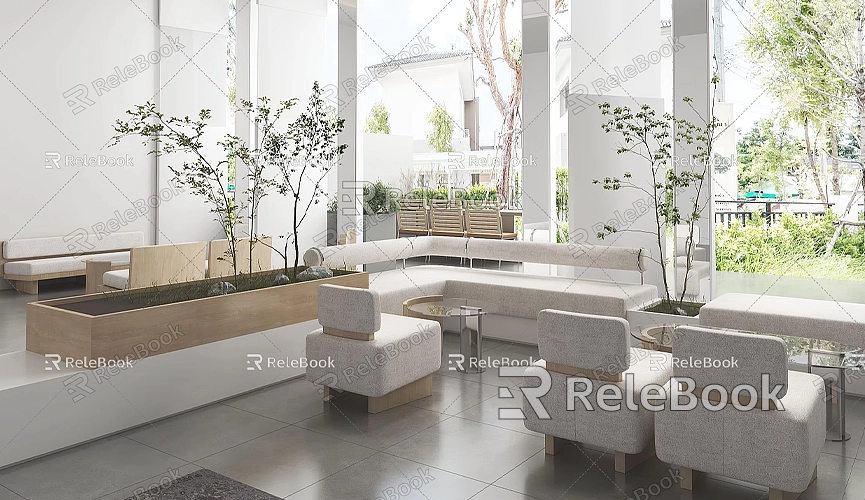How to Erase Models in SketchUp
In the fields of architectural design and interior decoration, SketchUp is favored by many designers for its user-friendly interface and powerful features. As projects progress, the complexity of models often increases, leading to various challenges in managing and editing them, especially when it comes to deleting unwanted models. This article will explore the different methods for deleting models in SketchUp and provide practical tips and suggestions to help you work more efficiently.
Understanding the Structure of Models in SketchUp
Before diving into methods for deleting models, it’s important to understand the structure of models in SketchUp. A SketchUp model consists of multiple components, groups, and entities. Components are reusable objects, while groups are used to combine multiple entities for easier management. When deleting models, it's essential to clarify the relationships between these objects to avoid accidental deletions.

Steps to Delete a Single Model
Deleting a single model is one of the basic operations in SketchUp. Here are the specific steps:
1. Select Tool: Choose the "Select" tool from the toolbar or simply press the spacebar.
2. Click on Model: Click on the model you want to delete in the drawing area. The selected model will display a blue outline.
3. Delete Model: Press the "Delete" key on your keyboard, and the selected model will be removed.
If you accidentally delete a model, you can restore it using the "Undo" function (Ctrl + Z or Command + Z).
Tips for Deleting Multiple Models
In a project, you often need to delete multiple models at once. Here are some common methods:
- Shift Selection: Hold down the Shift key and click on each model you want to delete, then press the "Delete" key.
- Window Selection: Use the "Select" tool to click and drag your mouse to create a selection box around multiple objects. This method is useful for quickly selecting multiple models in complex scenes.
- Tag Management: Assign related models to the same tag, hide other tags, and easily select and delete in bulk.
Managing Layers and Components
Effective management of layers and components is crucial for deleting models efficiently. By using layers wisely, you can easily manage different parts of a model. For example, if your project includes multiple areas with different functions (like furniture, walls, and decorations), placing them in separate layers allows you to quickly hide or delete specific parts as needed.

Steps for Layer Management
1. Create Layers: In the "Layers" panel, create new layers and assign the corresponding models to these layers.
2. Hide Layers: Click the eye icon in the layers panel to hide all content in a specific layer, preventing distractions.
3. Delete Layers: Select the layer you want to delete, right-click, and choose "Delete Layer," which will prompt you to confirm if you want to delete all models within that layer.
Tips for Handling Complex Models
For complex models, especially those with multiple groups or components, the deletion process can be a bit cumbersome. Here are some tips for handling complex models:
- Enter Edit Mode: Right-click on a group or component and select "Edit Group" or "Edit Component" to make selections and deletions within the model.
- Layered Operations: If a model is very complex, consider breaking it down into multiple parts for gradual deletion. This reduces the risk of accidental errors.
Cleaning Up Unused Components and Materials
Over time, you may accumulate many unused components and materials during modeling. Regularly cleaning up these extra elements can significantly improve SketchUp's performance. Here’s how to clean up unused elements:
1. Open Model Information: Select "Model Info" from the "Window" menu.
2. View Unused Elements: In the "Components" or "Materials" tab, you can see all unused components and materials.
3. Delete Unused Elements: Select the unused elements and click the "Delete" button to keep your model clean.
Using Plugins to Improve Efficiency
To further enhance the efficiency of model deletion, consider using some plugins. The SketchUp Extension Warehouse has many useful plugins that can help simplify operations. For example, some plugins can quickly select similar material objects or provide one-click deletion of unused components. These tools can significantly boost your productivity.
Handling Special Situations
In some special cases, deleting models may present challenges. For instance, some models may be locked or part of other groups and components. In such situations, you can take the following steps:
- Unlock Models: Right-click on the locked model, select "Unlock," and then proceed to delete it.
- Hierarchy View: If you can’t select a model, use the "Outliner" tool to view the model's hierarchy and identify the objects you need to delete.
Practical Considerations
When deleting models, there are several considerations that can help you avoid unnecessary trouble:
- Save Regularly: Before performing large-scale deletions, ensure you save your current project to prevent data loss from accidental deletions.
- Backup Important Models: For particularly important models, consider making a separate backup copy and storing it in another location.
- Be Cautious: When selecting and deleting models, double-check the selected objects to ensure you don’t accidentally delete something important.
In SketchUp, while deleting models is a basic operation, mastering efficient deletion techniques can greatly enhance your productivity. By utilizing selection tools, layer management, and plugin assistance, you can easily manage and delete unwanted models, keeping your project organized and efficient.
Finally, if you need high-quality 3D textures and HDRIs for your modeling and virtual scenes, you can download them for free from [Relebook Textures](https://textures.relebook.com/); if you need exquisite 3D models, you can download them from [Relebook 3D Models](https://3dmodels.relebook.com/). Relebook offers a wealth of quality 3D resources. We hope this article helps you navigate SketchUp more smoothly and enhances your design process!

